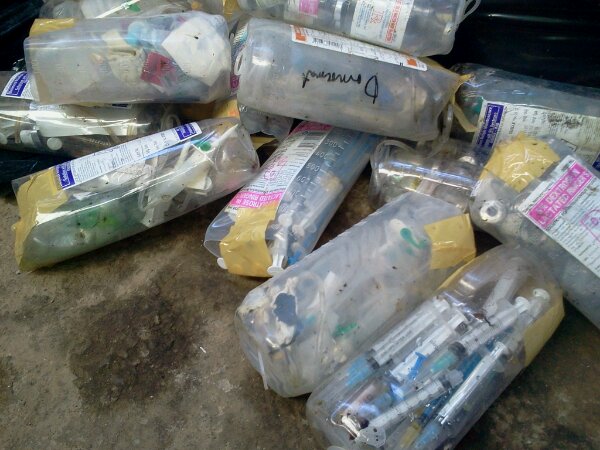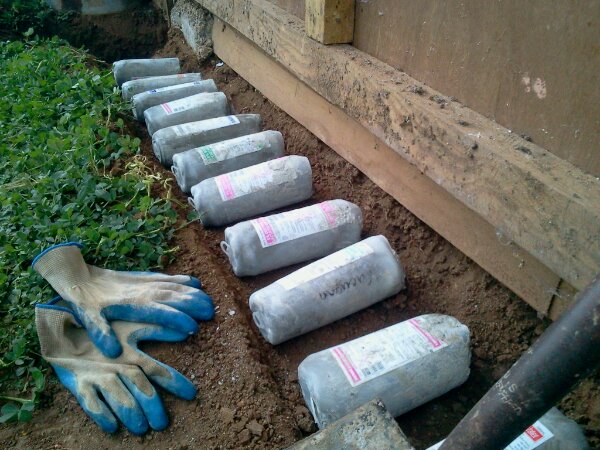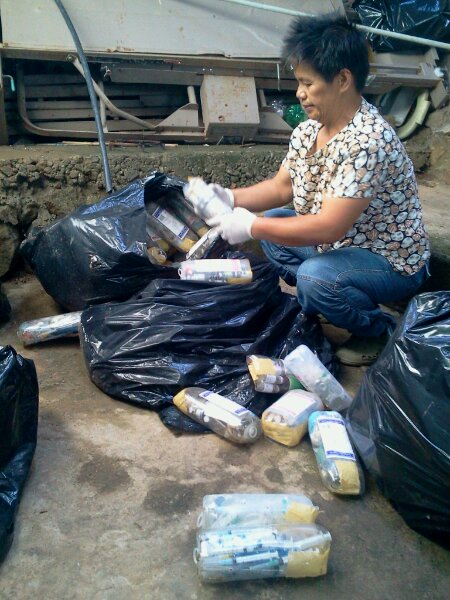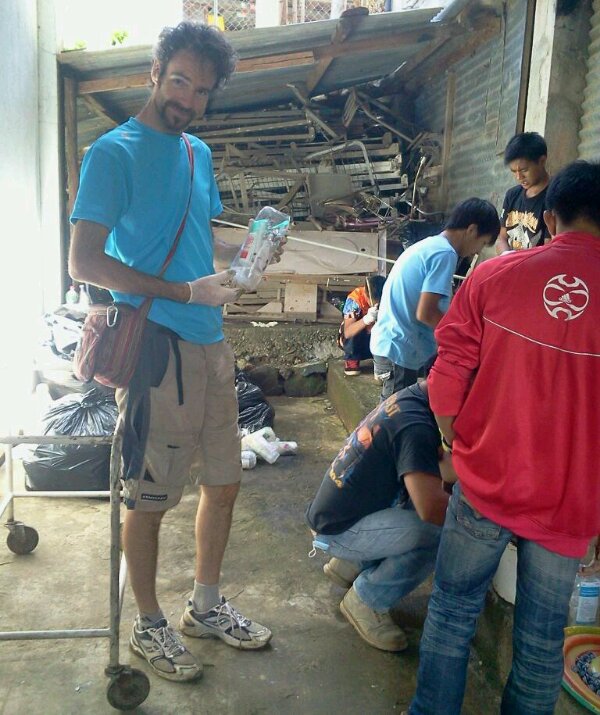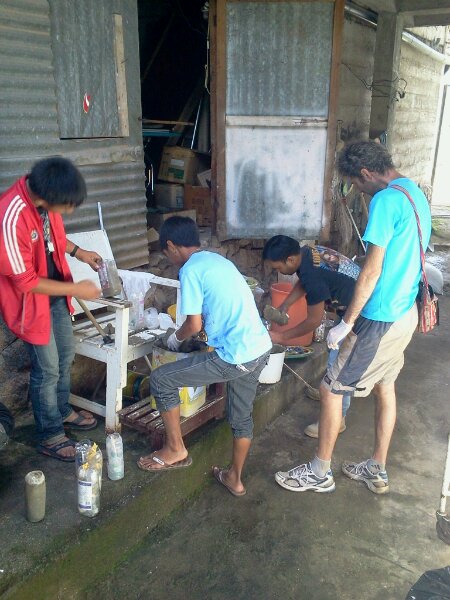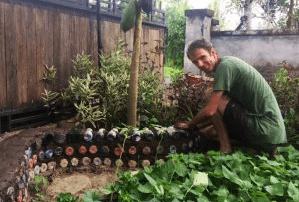What to do with toxic hospital trash? No really, what to do?! I was asked this question two months ago, now I am in the village of Besao trying out some solutions. Here in Besao, surely like so many other places in the world, hospitals generate all sorts of crazy wastes. Its one element of Western medicine that we don’t think about much, but here in a remote village it raises a big question: Where are all the needles, syringes, pill packaging, vials, tubes and more that are generated on a daily basis supposed to go? Western medicine deeply relies on the disposible concept– one-time-use-plastic that of course is contaminated.
Jane is an impassioned hospital utility worker here in Besao, who I have been working with. She is sick of dumping, burying and burning all the hospital garbage (the only thing to do!). Together we have been coming up with ideas. Here, Jane she has been filling old dextrose bottles with syringes, tubes, vials, etc and we are experimenting filling them with fine cement. The goal is to make bricks that will last the next 1000 years. I know, it isnt perfect, but at least it is a start. Any other ideas? Shortly I post more photos of our medical waste innovations this week.
For years the only answer here has been to burn it, put it in a big tank, or bury it in a big pit. But, that really isnt a solution. The ashes and the funes are a testament to that. Especially for things like needles when we start thinking a hundred years in the future. And just imagine all the potential diseases brewing in there to be discovered way in the future.
Enter Jane. I have been staying at her house the last week exploring garbage creativity. She is one of the janitors at the hospital. For years she admits to burning garbage, dumping it in the forest, or putting it into the pit. She hated doing it, but there really isnt anything else to do.
Until she heared about bottle bricks. Since then she has been on a one woman garbage packing crusade. My friend Pi first told me about her. He kept urging me to make the tricky trip to Besao to meet her and see what she was up to. Finally, I did, and am so inspired by her passion for her community, that I have stayed the week to do some projects.
One of these is at the hospital. She has come up with the idea of using dextrose bottles (of which there is an abundance of waste at the hospital) to pack all the must toxic trash into. This week we do the first experimental building with these bricks to develop the as solution for hospitals.
Of course, this really isnt the solution. The real solution is rethinking medicine. So that is healthy.

